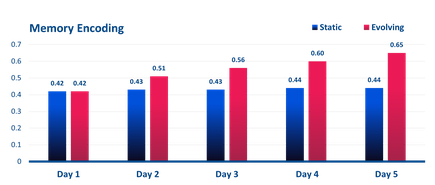Small changes make a big impact in digital out-of-home advertising
- 25 August, 2021 17:22

Outdoor media company, QMS, and neuro-marketing firm, Neuro-Insight, have found and quantified the way changing digital out-of-home (DOOH) advertising can have a 38 per cent higher impact than static advertising - all by day five.
In a study of 30 examples across 15 categories, one of the strongest performers used digital capacity to evolve in a simple change that displayed the day of the week and the temperature at the time. The data-driven targeting delivered an 18 per cent stronger result than the average, static DOOH campaign. Results also showed long-term memory encoding, which is vital for effective campaigns, continued in respondents exposed to changing creative over time.
 Credit: QMS
Credit: QMS Neuro-Insight CEO, Peter Pynta, said the study scientifically proved static images on out-of-home advertising or DOOH do a great job at reminding audiences. Importantly, it proves that changes as simple as a different colour or updated copy help build new memories to enhance campaign performance.
“We looked at how different DOOH capabilities changed the memory encoding bias across both the detailed left brain and global right brain – known as the Neurostate. This now shows us how, over time, evolving creative helps build new memories each time it is seen - driving a higher cumulative impact for the overall campaign,” Pynta said.
“Now, for the first time, we can quantify what we have always intuitively thought about the medium,” added QMS chief strategy officer, Christian Zavecz.
The Royals' head of strategy, Tom Donald, whose work for Coopers was included in the research study, agreed the findings change the way OOH should be considered and used.
“Knowing how different OOH creative impacts a consumer’s memory should make creatives and strategists rethink how they use OOH from this point on. We don’t need to re-invent the wheel, but we can think of OOH beyond just an awareness medium," he said. “With the speed and flexibility of DOOH, there are no excuses not to make small changes to the creative over the life of a campaign, for maximum impact. “What this study shows is that dynamic DOOH campaigns are a great way to deliver higher impact over time, allowing brands to create and embed new memories.”
Although DOOH comprises about 60 per cent of OOH, Zavecz said uptake of DOOH’s ability to change creative to date was comparatively low. Both media owners and advertisers need to properly understand the additional value DOOH can bring to take advantage of it, he said.
The study is the third iteration of QMS’ investment into better understanding the real impact of DOOH on consumers through neuroscience.
You can also follow CMO on Twitter: @CMOAustralia, take part in the CMO conversation on LinkedIn: CMO ANZ, follow our regular updates via CMO Australia's Linkedin company page

